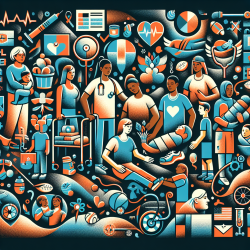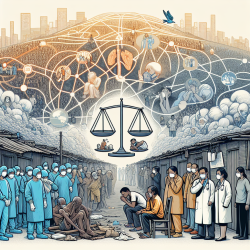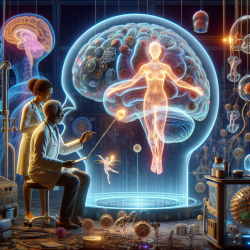In the ever-evolving field of medical imaging, practitioners are constantly seeking ways to enhance their skills and improve patient outcomes. One area that has garnered significant attention is the segmentation of white matter hyperintensities (WMHs) in neuroimaging, particularly due to its association with cognitive decline and increased risk of dementia.
The research article titled "Deep Bayesian networks for uncertainty estimation and adversarial resistance of white matter hyperintensity segmentation" by Mojiri Forooshani et al. presents a novel approach using Bayesian 3D convolutional neural networks (CNNs) with a U-Net architecture. This innovative method not only segments WMHs but also provides uncertainty estimates for quality control, offering a robust solution adaptable to various imaging protocols.
The Power of Bayesian Networks
The study introduces a Bayesian 3D CNN that excels in segmenting WMHs by providing high accuracy and efficiency. This model outperforms traditional algorithms like BIANCA and DeepMedic by achieving a Dice similarity coefficient of 0.89±0.08 and a modified Hausdorff distance of 2.98±4.40 mm. Such metrics highlight the model's precision in identifying WMHs across different datasets and conditions.
For practitioners, implementing this model can lead to more accurate diagnoses and treatment plans. The ability to estimate uncertainty allows clinicians to assess the reliability of segmentation results, thereby enhancing decision-making processes.
Adversarial Resistance and Robustness
A notable feature of this research is its focus on adversarial resistance. The model's robustness was tested against "clinical adversarial cases," simulating data with low signal-to-noise ratios and varying resolutions. This ensures that the model maintains its performance across diverse clinical scenarios, making it a valuable tool for practitioners dealing with complex cases.
Encouraging Further Research
This research opens up new avenues for further exploration in the field of medical imaging. Practitioners are encouraged to delve deeper into the potential applications of Bayesian networks in other areas of neuroimaging or even beyond. By engaging with this cutting-edge technology, clinicians can contribute to the advancement of medical practices and improve patient care.
The models developed in this study are available for public use, complete with documentation and a user-friendly interface, making it accessible even to those without programming expertise. This democratization of technology empowers practitioners to integrate advanced techniques into their workflows seamlessly.
To read the original research paper, please follow this link: Deep Bayesian networks for uncertainty estimation and adversarial resistance of white matter hyperintensity segmentation.










